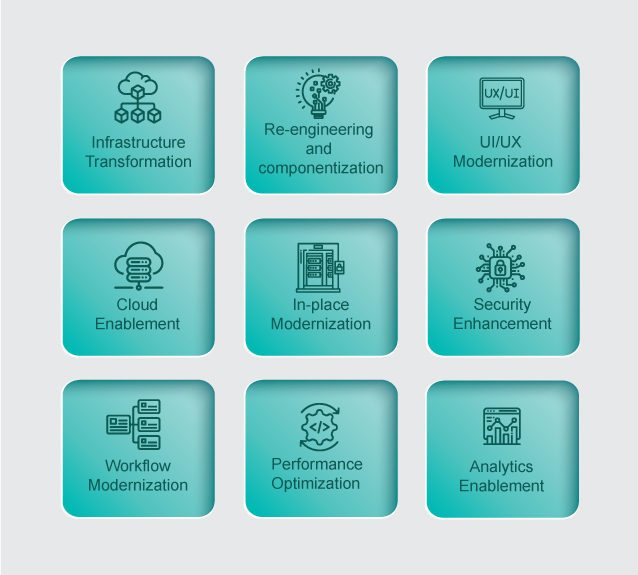



Application modernization is not a ‘nice-to-have initiative’ anymore. It is a ‘must-have initiative’ that enterprises need to embrace to thrive in a fast-moving market. Application modernization is essential to make enterprises agile, responsive to dynamic market needs, and future-ready. Modernized applications are also more cost-effective to maintain and manage. They also provide a better experience to customers through API-first and microservices architecture. In an agile world, enterprises cannot afford to use monolithic applications that are expensive and difficult to update and scale. They cannot afford downtime because one component faced loading or performance issues.
That’s why most enterprises plan to modernize their custom applications over the next year.
Even ISVs are planning to modernize their application offerings to avoid becoming extinct and stay in the consideration set of their enterprise customers.
Recently, Konveyor released a report titled the State of Application Modernization that covered the trends in application modernization.
Let’s look at a few trends that enterprises and ISVs must know and implement.
Key Application Modernization Trends To Keep An Eye On
Increased Use of Hybrid Cloud
The public cloud is still used widely to migrate and manage the workload. After all, it is cost-effective. However, enterprises and ISVs are concerned about their data security. They want the best of both worlds - the security of a private cloud and the cost-efficiency of a public cloud.
This has increased the demand for hybrid cloud. 77% of enterprises already use the hybrid cloud to manage their workload. Hybrid cloud provides the right level of security, control, and consistency in operations. That’s why it’s becoming the most preferred option for enterprises and ISVs to deploy and manage applications.
Increased Adoption of Containers

According to Gartner, 75% of enterprises plan to run containerized applications in production by this year. Its popularity can be attributed to the increase in hybrid and multi-cloud adoption. In fact, Konveyor's report shows that a majority of enterprises are using containers and hybrid or multi-cloud.
That's because containers allow enterprises to deploy applications quickly across multiple cloud platforms. It makes applications portable and makes migration to cloud platforms easier. Containers give developers more time to focus on innovations instead of operational tasks. It automates deployment, which makes it easier for the developers to respond to customer needs quickly.

Increased Interest in Kubernetes
Perhaps unsurprisingly given the interest in containers, Kubernetes is occupying the thoughts of product ISVs. The report revealed that the need for scalability, reliability, and security was the driving force for the growing interest in Kubernetes. Kubernetes is an open-source container orchestration platform that automates containerized applications' deployment, scaling, and management. It helps enterprises and ISVs build better products and apps.
Kubernetes is technology and language-agnostic. It is compatible with all cloud environments and can function without infrastructure lock-in. But more importantly, it is modular, flexible, and scalable. That's why developers like Kubernetes. It helps them tackle the operational and security challenges and build and deploy modern cloud-native applications at scale.
Replatforming, Refactoring, and Repurchasing of Legacy Platforms
According to the Konveyor report, enterprises plan to replatform (upgrade the existing database, operating systems, and other components using cloud migration), refactor (rearchitect the existing applications as cloud-native and move them to serverless architecture), or repurchase (move from licensees to software-as-a-service model) over half of their legacy platforms.
The objective is to reduce data center investment and simplify operations and infrastructure management. The report further reveals that developers plan to match the application modernization strategy with the workload or the company needs instead of using a single approach across the company.
Increased Adoption of AI/ML, Data Caching, and High-Performance Computing
The Konveyor report states that Artificial intelligence (AI), Machine Learning (ML), data caching, and high-performance computing will grow by 20% over the next two years. For example, high-performance computing will be helpful in AI and ML as it requires high computational power to process high data volume and speed up machine learning.

High-performance computing relies on multiple physical servers with highly powerful processors to perform specific tasks. They act as a single component to perform the tasks. Similarly, data caching can help in improving applications' performance. A cache can store subsets of data and deliver it quickly as soon as requested. It reduces the number of real-time backend calls by storing a large volume of data over a long period.
Why Are Expert Partners Necessary To Make Application Modernization A Reality?

According to the report, enterprises and ISVs would need the help of external partners to modernize applications. It's important because there's no single right approach to migrating workloads or modernization strategy. A one-size-fits-all approach will not work. An external partner has experience and knowledge of the modernization trends that they can use to help enterprises and ISVs transform.
At Xoriant, we provide a suite of nine application modernization services such as:
- Infrastructure transformation
- Re-engineering and componentization
- UI/UX modernization
- Cloud enablement
- In-place modernization
- Workflow modernization
- Security enhancement
- Performance optimization
- Analytics enablement
Enterprises and ISVs can adopt them incrementally or at once to modernize applications and improve business efficiency.
We assess, understand the business needs, identify the gaps, and plan and implement the modernization strategy to build modern, future-ready enterprises and ISVs.
Check out our related PDF: Legacy Application Modernization
Looking to modernize your applications?






 View Previous Blog
View Previous Blog




